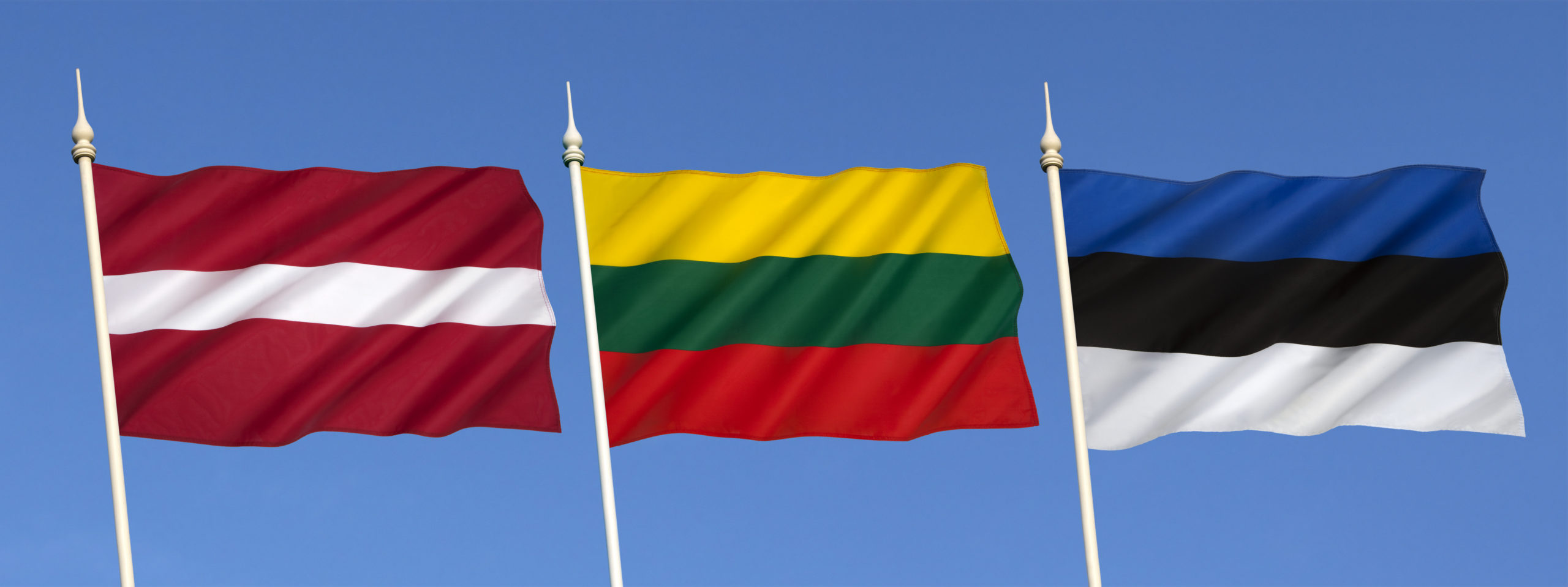A nation must think before it acts.
“We mean what we say. We have never reneged on any commitment we have made. Our sacred honor is at stake.” This is an excerpt from a speech by Joe Biden, made during a visit to Riga, Latvia, in 2016. At that time, he was an outgoing US vice president, whose aim was to reassure frontline NATO allies about the US commitment to the alliance at a time when then-candidate Donald Trump’s outspoken ambivalence for the organization was clearly a cause for concern.
Four years have passed, but Biden’s mission remains comparable. The president-elect is working hard to convince US friends in Europe that alliances and the idea of multilateralism will return to the top of political agenda. There is no doubt Biden interprets the European vector of Trump’s foreign policy as damaging and in need of repair.
Various moves by Trump certainly caused uneasiness in Central and Eastern Europe (CEE) during his tenure. Yet CEE countries also viewed Trump with more nuance than some of their counterparts in the Western part of the continent. While the Republican president was keen to downgrade the importance of NATO and emphasize his personal warmth towards Russian leader Vladimir Putin, the CEE-related policies of his White House were more or less in line with those of previous administrations. Whether that is because of Congress and experienced senior officials surrounding Trump (and the president’s own lack of interest in policy detail) or due to Trump’s personal intent is now of rather tenuous importance.
Hence, while Biden’s Baltic policy agenda contains an obvious need to move forward and increase the level of trust between the parties, it should also continue some of the constructive initiatives that began under Trump.
First, it is of utmost relevance for the Baltics that the political atmosphere in transatlantic relations improve. Over the last couple of years, US relations with countries such as Germany have soured. Trump was also the first American leader to call the European Union “a foe”. Not surprisingly the image of the US plummeted among the population in multiple European countries, while people in Lithuania, Latvia and Estonia expressed preference for the Biden candidacy during the US presidential election. Trump’s antics also led to an unnecessary drama during NATO summits (e.g. in 2018, when Trump was, according to multiple sources, keen to announce a US withdrawal from the alliance).
For the Baltics, the worst possible outcome is to be pushed to make a choice between supporting major European allies or advocating for the US. While that has not happened too often, Trump’s transactional policies kept the number of dilemmas rising. (For instance: Should the Baltics be supportive of US troop withdrawal from Germany if some of these armed forces might be relocated to Poland? Should the Baltics support the US Embassy move to Jerusalem as a sign of transatlantic solidarity, even if the majority of EU countries opposes the move? How should the Baltics regard proposals on European Defence Union and strategic autonomy, which are at least partly aimed at reducing Europe’s dependence on the US?) While some disagreements between the US and Europe are inevitable, a closer dialogue on issues is the best antidote to unnecessary complications and mutual suspicion.
Second, the policy of deterrence remains a top issue. Over the last four years, steps were made to reassure the CEE about continuous US involvement in regional security matters. For instance, an additional troop deployment to Poland was made (some 4,500 US troops are currently based in Poland, and about 1,000 more are to be added). Moreover, the US battalion with Abrams tanks and other equipment was stationed in Lithuania between October 2019 and June 2020. It showed that the deployment of a battalion-sized force — a traditionally politically sensitive issue due to the Baltic countries geographic proximity to Russia — is no longer taboo. The US also contributed $3.7 million through the European Deterrence Initiative to open a new special operations site in the Latvian capital of Riga. It includes a vehicle servicing facility, ammunition storage and two helipads for the US CV-22 aircraft from the United Kingdom-based 352nd Special Operations Wing.
Moreover, as Defence Secretary Mark Esper said in October 2020, just before being fired, the US is considering strengthening its posture in Romania, Bulgaria and the Baltic states with possible deployments on an “enduring basis.” While he stopped short of saying “permanent,” it was a positive indication. The Baltic countries surely hope the window of opportunity for more American troops in the region remains open after the presidential transition.
For that to happen, Lithuania, Latvia and Estonia need to do their homework, as well. While all three countries fulfill the NATO obligation to spend at least 2% of GDP on defence, the issue of having sufficient military training areas and other infrastructure capable of welcoming additional American troops remains. Besides, there is a need to tackle other long-term vulnerabilities of the Baltic security, such as air defence. In 2020, the US, for the first time, earmarked a separate $50 million budget lineto boost air defense capabilities of the Baltics. Furthermore, Biden explicitly emphasized he will not raid the European Deterrence Initiative fund to pay for the border wall with Mexico, which is an encouraging sign for future investment. Hence, the hope is that over the next couple of years, with continued US support, the current NATO air policing mission in the Baltics could become a full-fledged air-defence mission.
Third, US policy on Russia matters for the Baltics. The Obama administration’s attempts to “reset” the relationship are unlikely to be repeated; Biden has said the US “must impose real costs on Russia for its violations of international norms and stand with Russian civil society, which has bravely stood up time and again against President Vladimir Putin’s kleptocratic authoritarian system.” It is a promising sign for the Baltics, who felt somehow overlooked during Obama’s first-term endeavour on Russia. In addition, Biden is likely to continue pressuring Russia — and Germany — against Nord Stream 2, not least because of strong bipartisan opposition to the project in Congress. It clearly reflects the Baltic position on the pipeline as well, as the project could increase European dependence on Russian gas. While some of Trump’s Russian moves could be reversed (for instance, Biden seems keen to remain in the Open Skies treaty), principled position on Russia seems to be a bipartisan consensus in Washington DC.
Finally, there is hope that the US will be keen to take an active role in the Eastern neighborhood, especially with regard to Belarus and Ukraine. While the Trump’s administration signalled intent to increase its dialogue with Belarus in late 2019 and early 2020, the move basically faltered after Belarus’ rigged presidential elections this summer and the mass anti-Lukashenko protests that ensued. Since then, the US has become relatively passive, not least because of its own domestic election and the fact that Trump’s nominated ambassador to Belarus, Julie Fisher, was confirmed by the Senate only in mid-December.
It is still unclear whether Belarusian protesters will prevail in overthrowing a regime that has been in power for 26 years, but they certainly need support. Biden has spoken about the need to significantly expand sanctions on the Belarusian regime and seek new multilateral opportunities to support the pro-democratic forces. With human rights possibly playing a more prominent role in Biden’s administration than in Trump’s, these measures are likely to garner political support.
Ukraine, while much more openly pro-Western, struggles with anti-corruption reforms and still has to defend itself against Russian aggression in Donbass. While Ukraine’s future transformation depends highly on its relationship with the EU, the US role is still significant, not least on security matters. In addition, Ukraine is keen on American sanctions on Nord Stream 2, as the pipeline, if put into service, could significantly reduce Ukraine’s annual $2 to 3 billion revenue from gas transit and make Ukraine more vulnerable to Russian political pressure. Biden’s priorities on Ukraine, though, have not yet been extensively presented.
Trump’s rhetoric was troubling for countries on NATO’s Eastern frontier, yet the actual security decisions related to the region proved to be less out of mainstream than expected. Biden, on the other hand, takes over the presidency with more personal knowledge of foreign policy and an extremely competent team. However, he also has a lot on his plate, with the ongoing COVID-19 pandemic and the issue of relations with China encompassing multiple policy challenges (no surprise that one of Biden advisors described the priorities of the new administration as “China, China, China, Russia.”). Hence, whether the next four years mean a breakthrough on the priority issues for the CEE remains to be seen.




